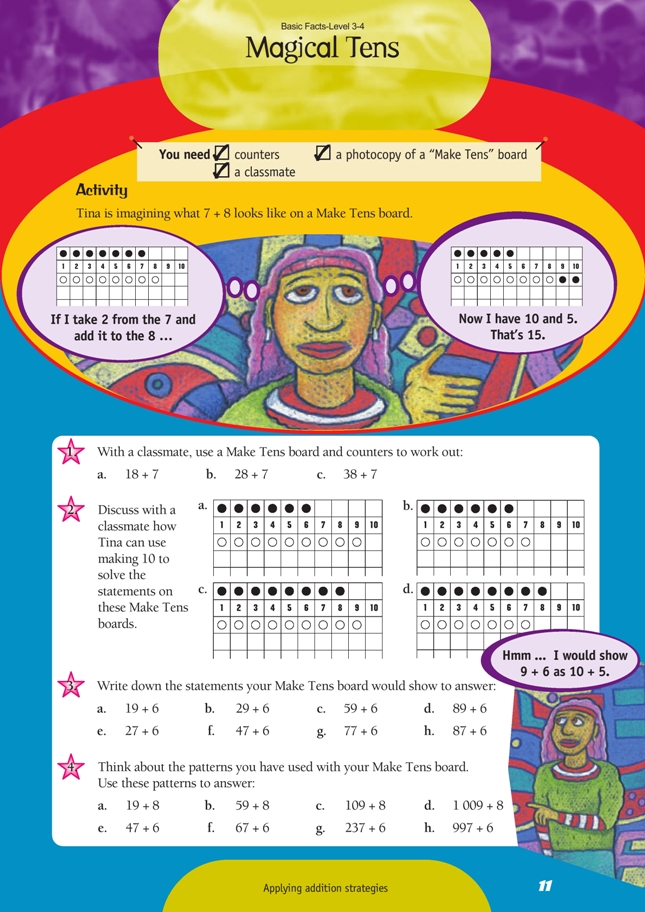This is a level 2 number activity from the Figure It Out series. It relates to Stage 5 of the Number Framework.
A PDF of the student activity is included.
Click on the image to enlarge it. Click again to close. Download PDF (211 KB)
use additive strategies (make a ten) to solve addition problems
photocopy of a "Make Ten" board
FIO, Levels 3-4, Basic Facts, Magical Tens, page 11
classmate
This activity will help students to bridge through 10 or a multiple of 10 as a mental strategy for addition. Initially, a Make Tens board is used as a model. Students are then encouraged to visualise the process, and finally, to work with numbers in their mind only.
Using the Make Tens board as a model for the calculation 8 + 7, it is useful to see the 7 as 5 + 2, taking the 8 up to 10, and then adding the remaining 5. To help the students split the numbers, you could ask questions like: “What do you need to add to 87 to make the next multiple of 10?” or “What two parts will you break the 6 into?” Using these models and activities, the students should see how useful part-whole thinking is.
The students can use a Make Tens board to check their answers to question 3.
Another good model for the same strategy is a number line. Encourage the students to visualise from this model using the same process.
For example:
Magical Tens is complemented by the activity on page 14 of the student booklet, which uses subtraction.
Answers to Activity
1. a. 18 + 7 = 25
b. 28 + 7 = 35
c. 38 + 7 = 45
2. Discussion may vary, but the statements on the boards could be written as:
a. 9 + 6 = 10 + 5
= 15
b. 7 + 6 = 10 + 3
= 13
c. 9 + 8 = 10 + 7
= 17
d. 8 + 7 = 10 + 5
= 15
3. a. 20 + 5
b. 30 + 5
c. 60 + 5
d. 90 + 5
e. 30 + 3
f. 50 + 3
g. 80 + 3
h. 90 + 3
4. a. 19 + 8 = 20 + 7
= 27
b. 59 + 8 = 60 + 7
= 67
c. 109 + 8 = 110 + 7
= 117
d. 1 009 + 8 = 1 010 + 7
= 1 017
e. 47 + 6 = 50 + 3
= 53
f. 67 + 6 = 70 + 3
= 73
g. 237 + 6 = 240 + 3
= 243
h. 997 + 6 = 1 000 + 3
= 1 003



